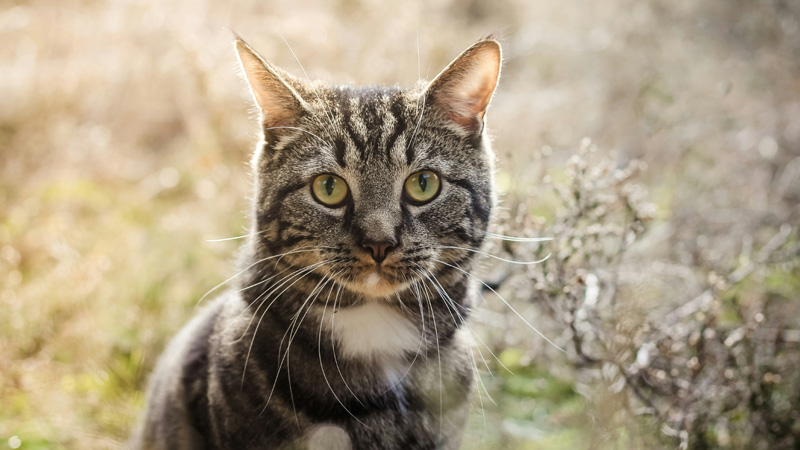Decoding the Tabby Cat: Purebred or Mixed?

Photo by Erik-Jan Leusink on Unsplash
Cats are fascinating creatures, each with its unique charm and personality. Among the myriad of feline varieties, the tabby cat stands out as one of the most common and beloved. However, when it comes to determining whether a tabby cat is purebred or mixed, things can get a bit tricky.
In this article, we'll delve into the world of tabby cats, examining their origins, characteristics, and the ever-persistent question of their lineage.
Tabby Cat Origins
The term "tabby" refers to a coat pattern rather than a specific breed. Tabby cats can be found across various breeds and are not exclusive to any particular lineage. The name itself likely has roots in the Arabic word "attabi," meaning silk, reflecting the silky appearance of the cat's fur.
Tabby cats have a rich history, with evidence of their existence dating back thousands of years. They can be traced to ancient Egypt, where they were revered and even considered sacred by the Egyptians. Over time, tabby cats spread across different regions and became integrated into various cultures.
The Genetic Makeup of Tabby Cats
To truly comprehend the genetic composition of tabby cats, it is crucial to explore the inheritance of coat patterns. Tabby markings are controlled by the agouti gene, which influences the distribution of pigment within individual hairs. This gene determines the intensity and arrangement of stripes and spots, resulting in the diverse coat patterns observed in tabbies.
Characteristics of Tabby Cats
The defining characteristic of tabby cats is their distinctive coat pattern. Tabby markings come in a variety of styles, including stripes, swirls, spots, and a combination of these patterns. The most common tabby pattern is the classic "M" shape on their foreheads, which is often seen in various breeds and mixed-breed cats alike.
Beyond their coat patterns, tabby cats exhibit a wide range of colors and personalities. Tabby markings can appear on cats of virtually any hue, including gray, orange, brown, and black. Their personalities are just as diverse, with some tabbies being outgoing and playful, while others are more reserved and independent.
Purebred Tabby Cats
When discussing whether a tabby cat is purebred, it's crucial to understand that being a tabby doesn't automatically classify a cat as purebred or mixed. Purebred cats belong to a specific breed with a documented pedigree, and they adhere to specific standards set by cat breed registries.
Several cat breeds commonly exhibit tabby patterns. For example, the American Shorthair, Maine Coon, and Abyssinian are known for having tabby variations. In these cases, if a cat is a purebred of a specific breed, it will exhibit the tabby pattern characteristic of that breed.
However, even within purebred cats, the presence of tabby markings doesn't necessarily mean the cat adheres strictly to breed standards. Some breeds allow for a range of coat patterns, including tabby, making the distinction between purebred and mixed less clear-cut.
Mixed-Breed Tabby Cats
The majority of tabby cats are mixed breeds, often resulting from the natural intermingling of various cat populations. Mixed-breed cats can carry the tabby gene due to the widespread prevalence of this coat pattern in the feline population.
Mixed-breed tabby cats may showcase a combination of different tabby patterns, colors, and markings, creating a unique and charming appearance. These cats often end up in shelters or adopted as strays, making them a common and cherished presence in many households.
The Mystery of Lineage
Determining a cat's lineage, whether purebred or mixed, can be challenging, especially when it comes to tabby cats. Unlike dogs, where breed traits are more easily identifiable, the diverse and unpredictable nature of feline genetics adds an element of mystery to a cat's lineage.
Genetic testing has become a valuable tool for pet owners curious about their cat's heritage. Companies offering cat DNA testing can provide insights into a cat's breed composition and even identify potential health risks. However, these tests may not always pinpoint specific breeds, especially for mixed-breed cats with complex genetic backgrounds.
The Importance of Adoption
Regardless of a cat's lineage, whether it's a purebred with a prestigious pedigree or a mixed-breed tabby from a local shelter, the most crucial factor is the love and care provided by its owner. Many wonderful and affectionate cats, including tabbies, are awaiting adoption in shelters around the world.
Adopting a cat, regardless of its lineage, is a rewarding experience that offers a loving home to a furry friend in need. Mixed-breed tabby cats, in particular, often bring a delightful mix of characteristics and quirks that make them endearing companions.
Conclusion
In the world of feline companionship, the tabby cat holds a special place as a widespread and cherished member of many households. Whether a tabby cat is purebred or mixed, its value lies in the unique personality it brings to its human family. Understanding the distinction between purebred and mixed is essential for those seeking specific traits or characteristics, but ultimately, the bond between a cat and its owner transcends lineage. So, the next time you find yourself captivated by the charm of a tabby cat, remember that its true worth lies in the joy and companionship it brings into your life.
You May Also Like
 Black and White CatsThe 10 Cutest "Black & White" Cat Breeds
Black and White CatsThe 10 Cutest "Black & White" Cat Breeds With Green EyesThe 10 Cat Breeds With The Coolest Green Eyes
With Green EyesThe 10 Cat Breeds With The Coolest Green Eyes Blue-Gray Cats10 Blue-Gray Cat Breeds That Are Unique & Lovely
Blue-Gray Cats10 Blue-Gray Cat Breeds That Are Unique & Lovely Breed ReviewsWhat is a Tuxedo Cat? And 7 Common Breeds
Breed ReviewsWhat is a Tuxedo Cat? And 7 Common Breeds Breed ComparisonWhy is British Shorthair More Popular than American Shorthair?
Breed ComparisonWhy is British Shorthair More Popular than American Shorthair? Breed ComparisonMaine Coon vs. Normal Cat: What is the Difference?
Breed ComparisonMaine Coon vs. Normal Cat: What is the Difference?